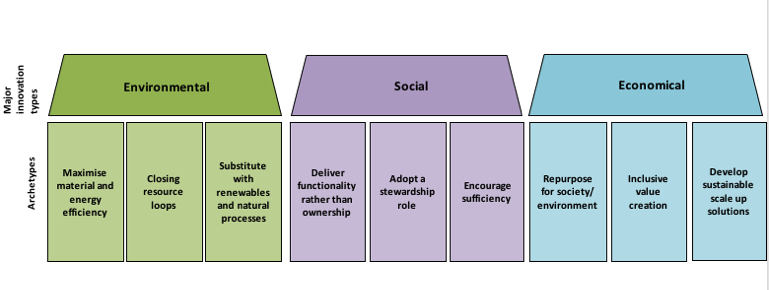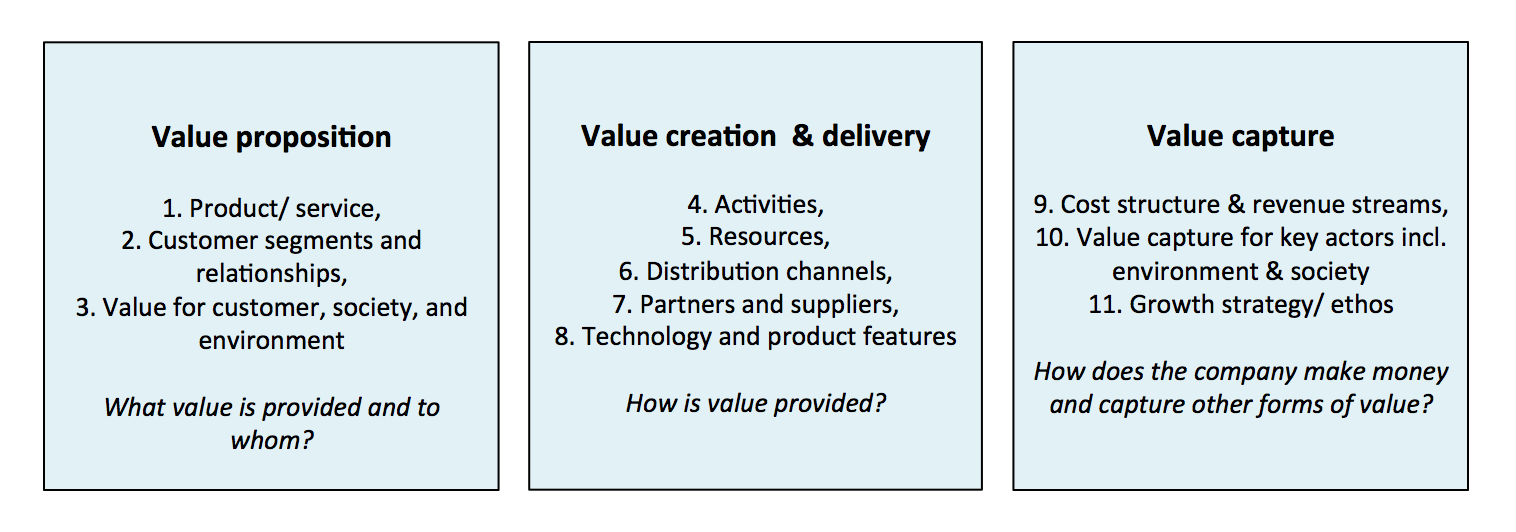In 2014, we published an overview of sustainable business model archetypes based on literature and practice review. At the time, this was a great way to move the business model discussion beyond products-as-a-service (e.g. Tukker, 2004) and also propose some more challenging models such as the ‘sufficiency-driven-business-model’ (Bocken & Short, 2016), focused on business challenging their role in endless consumption. We used cases of companies like Patagonia (‘don’t buy this jacket’) and Vitsœ (living with less, that lasts longer) to demonstrate that other business models are possible.
From the great and constructive feedback we got on the archetypes since, we found out that many people used these archetypes to develop sustainable innovations, whether it is in their own venture or business, a large corporation, NGOs, or in their research.
While it is also clear that a lot of companies started innovating their business models for sustainability and the circular economy since (and we report on emerging business examples in ERC project Circular X) we found that greater awareness of unsustainable business models could help people recognise common flaws and solutions for their sectors. Such flaws are often so ingrained – sometimes even commonly accepted – that more awareness is needed of these flaws to break through them.
We were inspired by the great focus on lineareconomy vs circulareconomy, but considered there were many other institutionalised unsustainable business models and possible sustainable business responses. Awareness of these institutionalised unsustainable business models could create more traction to break them down. See below our list of Unsustainable Business Models (UBMs) developed in this recent article:
- Environmental resource exploitation and waste UBM
- Human resource exploitation and waste UBM
- Economic exploitation UBM
- Unhealthy or unsustainable offering UBM
- Quantity over quality and value UBM
- Addictive consumption pattern UBM
- Complex opaque global value chain UBM
- Short-term shareholder – not stakeholder value UBM
- Financing and supporting unsustainable practices UBM
Please find the full open access study on unsustainable business models as well as possible positive pathways forward for different industries such as energy, transportation, construction, food, clothing, and finance, co-authored with Dr Sam Short here.
Sources:
Young, D., & Reeves, M. (2020). The quest for sustainable business model innovation. BCG.





